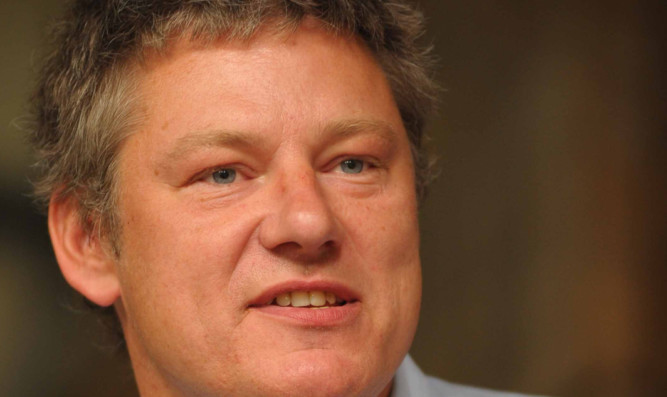If any of the 100 attendees at a Potato Council meeting in Edinburgh had hoped to hear an instant solution to the crisis facing the sector then they would return home disappointed.
There is no quick fix to the combination of very low ex-farm prices and falling consumption although there do seem to be some longer term prospects.
If there was to be a quick fix it would involve lower plantings this spring but Potato Council chief executive Rob Clayton was at pains to point out that he could not put even an advisory figure forward.
As a statutory levy body the Potato Council has to avoid doing anything that smacks of market manipulation.
The EU would immediately call foul over what would be seen as a state aid.
He did, however, say that his budget forecasts for this year allow for a reduction of between 2 and 3% in the sum raised from growers by means of the area levy.
He has also of late been advising growers to look hard at the costs incurred by growing potatoes on marginal land.
The currrent market would certainly suggest a bigger cutback but cereals and sugar beet, which are the main alternatives in the main English growing areas, are not showing attractive margins either.
The consensus on Monday, both among the speakers and the audience, was that the best hope lay in increasing the Potato Council’s promotional activity even if it was at the expense of research and development.
A critical factor going forward had to be increasing per capita consumption of potatoes while at the same time arresting a long-term decline.
This was not a uniform decline with consumption of processed potatoes actually increasing while that of fresh potatoes decreased.
The year-on-year decline at one point last year was around 8% but this had corrected itself to some extent over the last quarter.
Nonetheless the long-term position was stark in 1942 British people munched their way through 1.5kg per week compared to around 0.5kg today.
Rebeccca Hughes of the Potato Council’s Consumer Insight department said: “ It is a steady 70-year decline but only 9% of consumers say they are consciously buying less. We are an ageing population and the fact is that retired households tend to eat more potatoes because they are part of their traditional diet.
“There are also far more one and two-person households and there seems to be more pressure on time.
“In 1990 the average preparation time for a meal was 45 minutes and now it is 32 minutes.”
Britain is a more multi-cultural society with a taste for different carbohydrates such as pasta, rice and fajitas.
But above all, noted Ms Hughes, there was a perception that potatoes were not a healthy food.
“Carbohydrates equals fat in many eyes,” she said.
“The only way to reverse this perception was through education starting at primary schools and working through to secondary schools and universities but this was a long-term strategy.”
Jim Aitken of Branston Produce asked why more effort had not been put in to including potatoes in the Five-a-Day fruit and vegetable campaign.
Nick Hughes, head of marketing at the Potato Council, replied: “Chips are the big barrier to acceptance but Five-a-Day is not the game changer people think it is.
“Many consumers already believe that potatoes are included.”
Product innovation was something that should not be ignored.
“Professor Ian Toth of the James Hutton Institute spoke from the audience as a consumer with a busy family-based lifestyle.
“The four minute potato would be great,” he said.
“We do have time to spend with our families but we don’t want to spend it cooking.”
The Potato Council appreciated all these points said Mr Clayton and the body’s new strategy would see a distinct shift away from research and development to promotion and marketing.
He did, however, warn of the dangers of cutting back too hard.
Processing potato growers, for example, relied heavily on research which would allow them to compete with Dutch and Belgian producers.
Promotion for these products was largely carried out by manufacturers with far larger budgets than the council could muster.
Laurencekirk grower Jim Cargill said he thought the central point was being missed.
“There is no correlation between the price we are receiving ex-farm for our potatoes and the price the consumer is paying for this very good product,” he said.
“We are receiving nothing like our cost of production.
“More transparency along the chain is needed with no one having a clear idea what packer and retailer margins are.”
Mr Clayton slightly dodged the question saying the Potato Council had tried to do this a few years ago but abandoned the effort because it proved impossible to establish the cost of production.
Each grower had his own ideas but there was insufficient benchmarking carried out to allow them to compare costs.
It seems that innovation and promotion are on the agenda but seeking price transparency is not.
